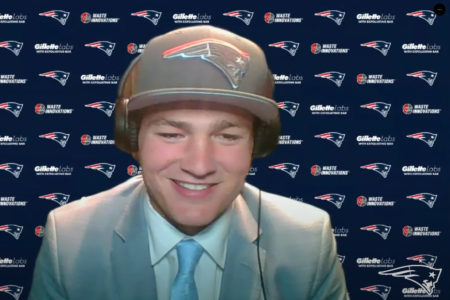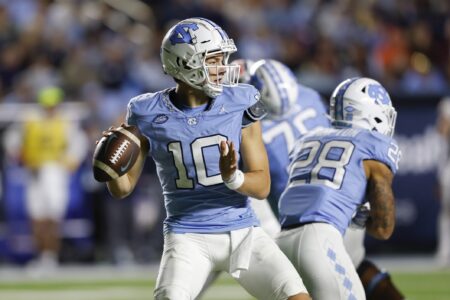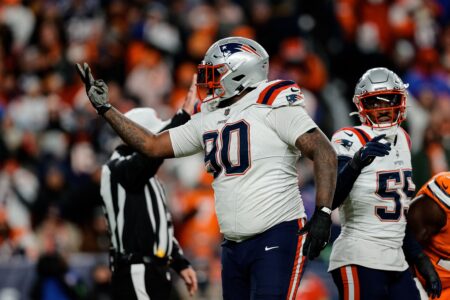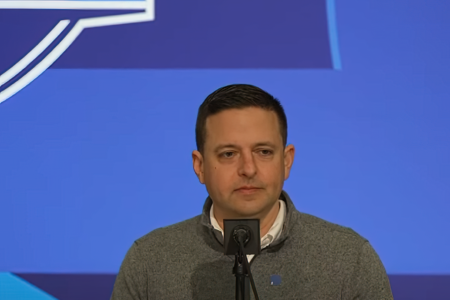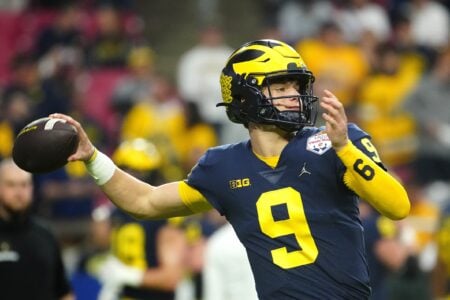Mayo, hope you don't mind if I add this to your thread: I ran my annual "Pass-Rushing DE/OLB Physical Freak" screen, which emphasizes explosiveness:
Four players squeaked through, most under the * exception:
Jadeveon Clowney
James Gayle
Khalil Mack
Kareem Martin
(For current Patriots, Jamie Collins totally blew away all those benchmarks EXCEPT length and upper-body strength, while Chandler Jones only missed the 10-yd split target. That presumably speaks to their respective roles.)
Off the top of my head, I were to try and come up with something like this for a DT, it would look something like this:
300#+ weight
30" vertical or more - suggests explosiveness
8 1/2' broad jump or more - suggests explosiveness
1.75 10 yard split or better - suggests quickness
30+ reps@225 - crudest metric of upper body power, even though it's a poor one
* Meets all but one criteria, but excels at 1 or more
Using that metric, I come up with the following guys who qualify as elite explosive DT prospects:
- Ra'Shede Hageman (2014): 311#, 1.75 10-split, 35" VJ, 9'6" VJ, 32 BP.
- Aaron Donald* (2011): 285#, 1.59 10-split, 32" VJ, 9' 8" broad jump, 35 BP.
- Linval Joseph (2010):328#, 1.75 10-split, 31.5" VJ, 8' 6" BJ, 39 BP.
- Ndamukong Suh (2010): 307#, 1.69 10-split, 35.5" VJ, 8'9" BJ, 32 BP.
- Geno Atkins* (2010): 293#, 1.68 10-split, 33" VJ, 9'8" BJ, 34 BP.
- Haloti Ngata (2006): 338#, 1.73 10-split, 31.5 VJ, 9'2" BJ, 37 BP.
- JJ Watt* (2011): 290#, 1.64 10-split, 37" VJ, 10' BJ, 34 BP.
- Dontari Poe* (2012): 346#, 1.67 10-split, 29.5" VJ, 8'9" BJ, 44 BP. Given that Poe weighed 346#, I think I can make an exception for being 1/2" short of my broad jump cutoff.

- Lamarr Houston (2010): 305#, 1.68 10-split, 33.5" VJ, 9'6" BJ, 30 BP.
- BJ Raji (2009): 337#, 1.69 10-split, 32" VJ, 8'7" BJ, 33 BP.
Guys who missed the cutoff:
- Fletcher Cox: 26" vertical at 298#.
- Michael Brockers: 1.78 10-split lowered to 1.73 at his pro day; 26.5" VJ raised to 30" at his pro day; 21 BP.
- Nick Fairley: no BP result reported for either the Combine or his Pro Day. Barely made the 30" VJ cutoff at 291#.
- Marcel Dareus: 27" VJ, 24 BP.
- Kevin Williams: 23 BP.
- Glenn Dorsey: 297#, barely made 10-split (1.74); missed on VJ (25.5"), BJ (8'4") and BP (27).
- Sedrick Ellis: 26.5" vertical.
Of interest:
- Armond Armstead (2012 pro day): 290#, 30" VJ, 9'10" BJ. BP and 10-split not reported, but the other numbers of very suggestive, especially the broad jump.
- I can't find a 10-split number of Vince Wilfork. His vertical was 26.5" at 323#.





